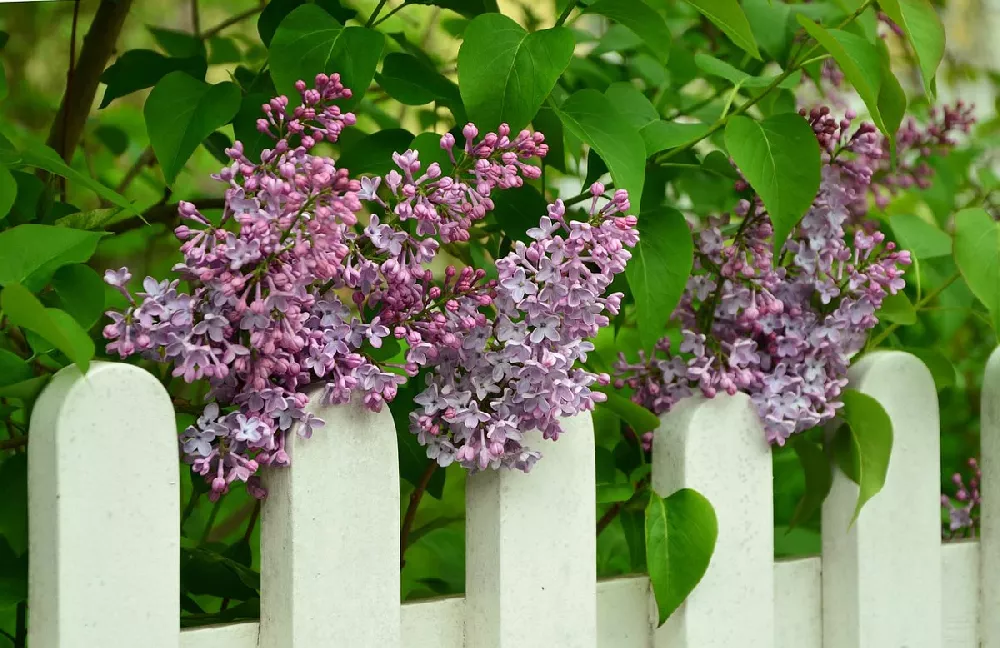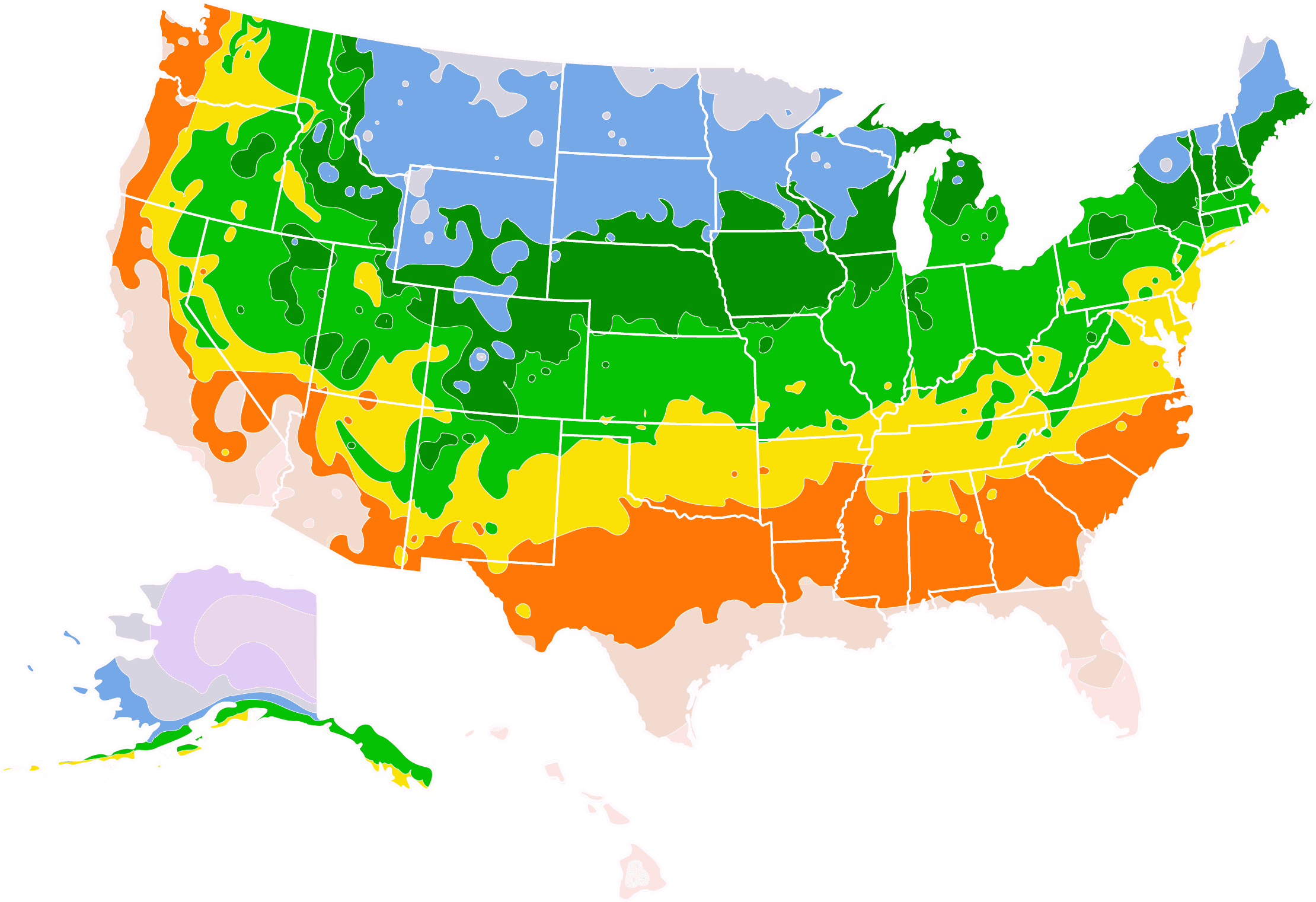Dwarf Korean Lilac Trees for Sale - Buying & Growing Guide
- Ships in 1-2 days
- 1-Year Warranty Eligible
- Pots or accessories are not included unless specified in the product options.
Shipping Details:
Once your order is shipped, you’ll receive an email with a tracking number and estimated delivery date. Most orders ship immediately, but some items are seasonal and may only ship in spring or fall. These products are noted on the website.
Few bushes are as beloved as the lilac, with its fragrant, profuse spring blossoms. Dwarf Korean Lilac, Syringa Meyeri 'Palibin,' is like a lilac on steroids. This durable, low-care shrub blooms twice a year. The first bloom is in mid-May, like most lilacs. But if you trim back the spent flowers, you may be rewarded with a second bloom time that lasts from mid-summer until the first frost. Dwarf Korean Lilac is also a great choice for smaller gardens, or for placement in the front of a flowering landscape. Its height maxes out at 4-6 feet, with a spread of 5-7 feet, making it a great anchor plant for a mixed flowering border. Here are a few more reasons to plant a Dwarf Korean Lilac Shrub:
- Grows well in most soil types, including poor quality, compacted soil, though it dislikes acidic soil.
- Resistant to drought, heat, and dry soil.
- Although resistant to deer, it attracts hummingbirds and butterflies.
Plant Care
Sunlight

Although Dwarf Korean Lilac can handle some shade, it thrives with 6 or more hours of sunlight a day.
Watering
Water once a week, or when the soil 2 inches below the surface is dry.
Fertilizing

Once your lilac starts blooming, use a balanced, slow-release fertilizer in spring.
Planting and Care
Planting instructions
Choose a site with well-drained soil for your Lilac Tree, where it will get at least 6 hours of sun daily. Unpot your plant, and tease out any encircling roots, which can girdle the bush and slowly kill it. Dig a hole that’s as deep as the root ball and twice as wide. Place the shrub in the hole and, while holding it upright and steady, fill in around it with topsoil. Tamp down the soil as you go to eliminate air pockets, and water thoroughly. Apply a 2-3 inch layer of mulch around the bush’s root zone to conserve moisture and hinder weeds.
Watering and nutrients
When newly planted, water your Dwarf Korean Lilac deeply at least once a week. After it is established, you can cut back. The tree should only need supplemental watering during very dry or hot weather. To determine if you need to water, check the soil 2 inches below the surface; if it’s dry, give your plant a drink. Once it starts blooming, begin feeding your lilac with a balanced, slow release fertilizer designed for landscape plants. Early spring is the best time to apply fertilizer.
Pollination
Lilac plants are monoecious — a single bush has both male and female reproductive parts. The male flower produces pollen, which is transferred to the female flowers through the action of bees and other insects. Next, the female flower produces a small brown seed once it has been pollinated.
Pruning
Generally, the best time to prune your lilac is right after it flowers. Clip off the spent blossoms at that time to increase the number of blooms later in the year, and the next year. You can do any shaping at this time that is needed to keep the bush in its usual gently rounded form. Also, keep an eye on your lilac for dead, broken, or diseased branches — these can be cut off any time you see them.
Pests and diseases
These hardy bushes rarely experience pest or disease pressure, though leaf-mining moths and thrips may occasionally be seen. Neither is likely to kill the bush, but they can be controlled by the judicious use of insecticides, or preferably by the release of predatory insects such as green lacewings. Lilac blight is one of the few diseases of the Syringa family. This bacterial disease causes twigs and leaves to turn black and wilt. Avoid overhead watering, keep the base of the plants free of leaf litter or debris, and be careful to allow space between multiple plants.
Achieving maximum results
Dwarf Korean Lilac Trees grow well outside in much of the continental U.S. and Canada. It is also possible to grow in a container rather than the ground. Choose a pot that is at least twice the size of the root ball, and fill it with good quality potting soil. These lilacs have a moderate rate of growth, so plan on repotting into a larger container every 3-5 years. Keep in mind that container-grown plants may need additional water and fertilizer, since they can’t reach deep in the soil to receive nutrients or water. Having said that, it can be well worth planting them in containers — picture, for example, two lilacs in ornamental terra cotta pots flanking your front doorway.
FAQs
Where can I grow Dwarf Korean Lilac Trees?
These cold-hardy trees grow wherever the temperatures do not go below -30 degrees Fahrenheit, or in U.S. Department of Agriculture hardiness zones 3-7. They are not the best choice if you live in the subtropical South, such as Florida, most of Texas, and the coastal regions of California. North of those areas, however, the lilac will thrive throughout the continental U.S. and up to the Canadian border.
How big does Dwarf Korean Lilac grow?
As its name suggests, this bush stays on the small side compared to other lilacs. It will grow to a mature height of 4-6 feet if well cared for, with a mature width of 5-7 feet. If grown in a container, it is likely to remain smaller than this, as the roots are constrained, which will limit growth.
How is Dwarf Korean Lilac best used in landscaping?
This lovely lilac has few equals as a specimen planting. At home in mixed shrubbery or perennial borders, this tree is perfect for informal garden borders. It will also excel as a foundation planting when fronted with lower-growing flowering perennials or annuals. It's also a great choice to plant by the entrance to a patio or garden, where the fragrant scent of the flowers can be appreciated by those passing through.
Compare Similar Products
You can't add more Product Name - Product size to the cart.
OK








